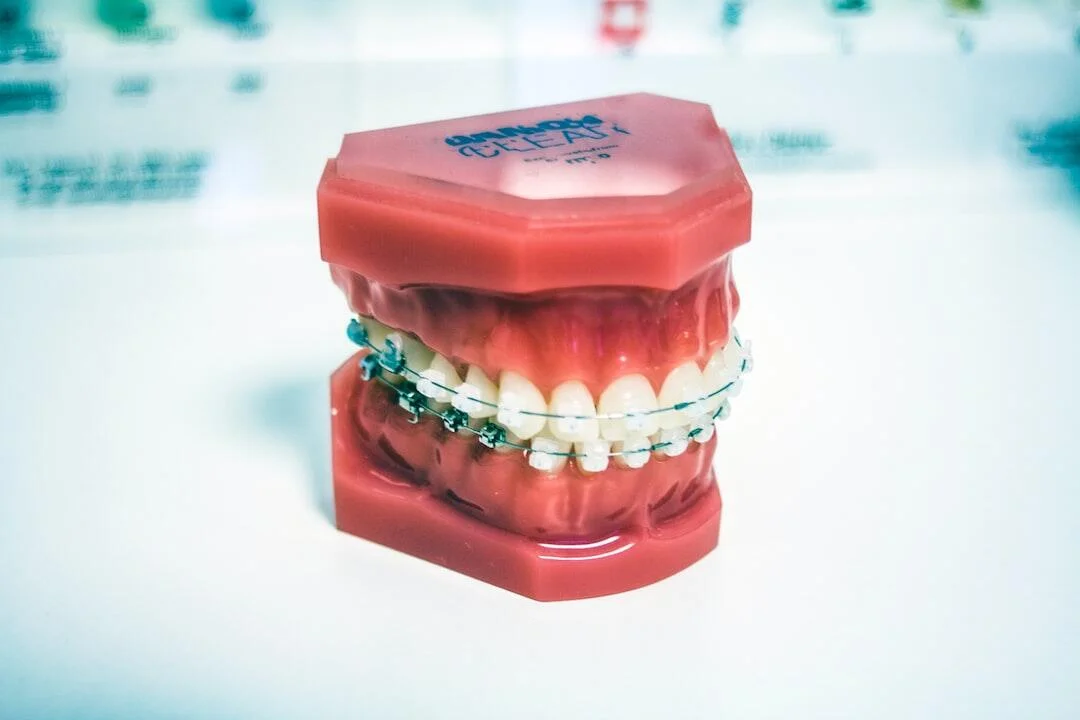HEALTH
Latest Advances in ABA Services for Autism: What’s New in 2024

Think of a world where a child with autism can practice grocery shopping from the comfort of their living room, or where a non-verbal teen can express their thoughts through a device controlled by their mind.
Welcome to the exciting world of ABA services for autism in 2024! The field of Applied Behavior Analysis (ABA) has seen incredible changes, embracing technology and innovation in ways that were once unimaginable. For families dealing with autism, these new developments offer not just hope, but real, life-changing solutions.
1. AI-Powered Personalized Treatment Plans
One of the biggest breakthroughs in services is the use of artificial intelligence (AI) to create personalized treatment plans. In 2024, smart computer systems can analyze vast amounts of information about each person with autism, creating therapy plans that are perfectly tailored to each individual.
Key features of AI for autism:
- Continuous learning and adjusting based on progress
- Quick adaptation to changing needs
- Suggestion of plan changes in real-time
- Analysis of behavior patterns, preferences, and progress rates
This level of personalization was once a dream, but now it’s a reality for many families receiving ABA therapy services. The AI systems can identify subtle patterns that might be missed by human observers, leading to more targeted and effective interventions. For example, the AI might notice that a child performs better on certain tasks at specific times of the day or after particular activities, allowing therapists to optimize the therapy schedule for maximum effectiveness.
Moreover, these AI systems can predict potential challenges and suggest proactive strategies, helping to prevent setbacks before they occur. This predictive capability is particularly valuable in managing behaviors and supporting skill development in various environments, from home to school and community settings.
2. Virtual Reality Skill Building
Virtual Reality (VR) has become a game-changer in ABA services for autism. This technology creates safe, controlled environments where individuals can practice skills that might be challenging in the real world.
Benefits of VR in ABA therapy:
- Safe practice of real-world scenarios (e.g., public transportation, grocery shopping)
- Teaching of abstract concepts and social cues
- Adjustable difficulty levels for gradual progress
- Engaging and fun learning experience
VR makes learning new skills less stressful and more enjoyable, allowing individuals to build confidence before facing real-world situations. For instance, a teenager with autism who’s anxious about job interviews can practice in a virtual office environment, interacting with AI-powered virtual interviewers. The scenarios can be repeated as many times as needed, with the difficulty gradually increasing as the individual becomes more comfortable.
Furthermore, VR is being used to teach complex social skills, such as reading facial expressions and understanding personal space. These concepts, which can be challenging to explain verbally, become much clearer when experienced in a virtual environment. The immersive nature of VR also helps with skill generalization, making it easier for individuals to apply what they’ve learned in the virtual world to real-life situations.
3. Wearable Tech for Real-Time Support
Wearable technology is revolutionizing how we understand and support individuals with autism. Smartwatches and discrete sensors now play a crucial role in ABA therapy Colorado springs services.
Capabilities of wearable tech in autism support:
- Monitoring heart rate, sleep patterns, and stress levels
- Identifying triggers and patterns
- Sending reminders for coping techniques
- Tracking skill usage and effectiveness in real-world situations
This constant stream of data helps therapists and families provide better support and track progress more accurately. For example, a smartwatch might detect rising stress levels in a child with autism and prompt them to use a calming technique they’ve learned in therapy. Over time, the device learns which techniques work best for the individual and can suggest the most effective strategies in different situations.
These wearables are also helping bridge the gap between therapy sessions and daily life. They can remind individuals to practice certain skills throughout the day, reinforcing what they’ve learned in formal ABA sessions. This continuous support and data collection are making ABA services more comprehensive and effective than ever before.
4. Gamification: Making Therapy Fun
In 2024, ABA services are using games to make learning new skills more enjoyable. These specially designed games target specific therapy goals while keeping individuals engaged and motivated.
Features of therapeutic games:
- Point systems and level unlocks for completing tasks
- Interactive challenges for emotion recognition and social skills
- Progress tracking for therapists
- At-home play to reinforce skills learned in therapy
These games make therapy feel less like work and more like play, encouraging consistent practice and skill development. For instance, a game might challenge players to identify emotions in various scenarios, awarding points and unlocking new levels as they improve. This not only makes the learning process more engaging but also provides immediate positive reinforcement, a key principle of ABA.
Moreover, many of these games incorporate multiplayer features, allowing individuals with autism to practice social skills with peers in a controlled, supportive environment. This social aspect of gaming can help build confidence and foster friendships, addressing the social challenges that often accompany autism.
5. Advanced Communication Tools
For non-verbal individuals or those with limited speech, new communication technologies are opening up worlds of possibilities in ABA services for autism.
Types of advanced communication tools:
- Eye-tracking devices
- Brain-computer interfaces
- Predictive text apps
- Symbol-based communication systems
These tools not only aid in basic communication but are also integrated into therapy sessions to help individuals participate more fully in their own treatment.
Table: Comparison of Advanced Communication Tools in ABA Therapy Services
| Tool Type | How It Works | Best For | Advantages |
| Eye-tracking Devices | Translates eye movements into words or commands | Individuals with limited motor skills | Allows for independent communication |
| Brain-Computer Interfaces | Interprets brain signals to select words or phrases | Those with severe physical limitations | Provides communication ability regardless of physical constraints |
| Predictive Text Apps | Suggests words and phrases based on the user’s history | Individuals with some language skills | Speeds up communication and expands vocabulary |
| Symbol-based Systems | Uses pictures and symbols to represent words and ideas | Visual learners or those new to communication devices | Easier to understand and use for many individuals |
These advanced communication tools are revolutionizing how individuals with autism engage in ABA therapy services, allowing for more effective and personalized interventions. For example, a non-verbal child using an eye-tracking device can now actively participate in therapy sessions, expressing preferences and making choices. This level of engagement was often challenging or impossible in the past, limiting the effectiveness of therapy for some individuals.
Furthermore, these tools are becoming more user-friendly. Many now use artificial intelligence to learn and adapt to the individual’s communication style, making them more intuitive and effective over time. This personalization ensures that each person has a communication system tailored to their unique needs and abilities.
6. Telehealth and Hybrid Therapy Models
The world of ABA services has expanded beyond the traditional clinic setting. In 2024, telehealth and hybrid therapy models are making high-quality ABA services more accessible than ever.
Advantages of telehealth in ABA:
- Increased accessibility for rural families
- Flexibility in scheduling
- Reduced travel time and costs
- Opportunity to practice skills in the home environment
Many programs now offer a mix of in-person and online sessions, allowing for the best of both worlds in ABA therapy services. This hybrid approach ensures that individuals can receive consistent therapy regardless of geographic location or other barriers to in-person sessions.
Telehealth platforms have also become more sophisticated, offering features like screen sharing, interactive whiteboards, and even virtual manipulatives. These tools allow therapists to engage clients in a variety of activities, closely mimicking in-person sessions. Additionally, telehealth enables therapists to observe and guide interactions in the home environment, providing real-time support to families as they implement strategies in their daily routines.
7. Data Analytics for Progress Tracking
Advanced data analytics are revolutionizing how progress is tracked in ABA therapy. In 2024, advanced software can provide detailed insights into an individual’s progress.
Capabilities of data analytics in ABA:
- Real-time progress tracking
- Identification of patterns and trends
- Prediction of potential challenges
- Suggestion of strategy adjustments
This data-driven approach allows for more precise and timely interventions in ABA services. For example, if the analytics system detects a plateau in progress for a particular skill, it might suggest alternative teaching methods or highlight the need for additional support in that area.
Moreover, these analytics tools are helping to standardize and improve the quality of ABA services across the board. By aggregating anonymized data from thousands of therapy sessions, researchers and clinicians can identify best practices and refine treatment protocols, ensuring that all individuals receive the most effective interventions possible.
8. Sensory Integration Technology
New technologies are helping individuals with autism better manage sensory sensitivities, a common challenge in ABA services.
Examples of sensory integration tech:
- Noise-cancelling headphones with customizable sound filters
- Light-adjusting glasses for visual sensitivity
- Tactile-friendly learning materials
- Virtual reality environments for controlled sensory exposure
These tools help create more comfortable learning environments and can be integrated into therapy sessions and daily life. For instance, noise-canceling headphones with customizable filters allow individuals to block out distracting background noise while still hearing important sounds like voices or instructions. This can significantly improve focus and engagement during therapy sessions and in everyday situations.
Virtual reality is also being used for gradual exposure therapy, helping individuals become more comfortable with challenging sensory experiences in a controlled, safe environment. This can lead to better tolerance and adaptation to sensory stimuli in the real world, improving overall quality of life.
9. Social Robotics
Social robots are becoming valuable tools in ABA therapy services, especially for individuals who find human interaction challenging.
Uses of social robots in ABA:
- Teaching basic social skills
- Providing consistent, predictable interactions
- Offering a low-stress way to practice communication
- Collecting data on social interactions for therapist analysis
These robots serve as stepping stones, helping individuals build confidence before engaging in human social interactions. They can be programmed to respond in consistent, predictable ways, which can be particularly comforting for individuals with autism who may struggle with the unpredictability of human interactions.
Furthermore, social robots can be used to teach and reinforce specific social skills, such as turn-taking in conversation or recognizing emotional cues. As the individual becomes more comfortable and proficient in their interactions with the robot, these skills can be gradually transferred to interactions with humans.
10. Parent Training Platforms
Recognizing the crucial role of family support, ABA services now include advanced platforms for parent and caregiver training.
Features of parent training platforms:
- Interactive online modules
- Virtual reality practice scenarios
- Real-time coaching through video calls
- Community forums for peer support
These platforms empower families to continue therapy techniques at home, maximizing the effectiveness of ABA therapy services. Parents and caregivers can access training materials at their convenience, practice techniques in virtual scenarios, and receive real-time feedback from professionals.
The community aspect of these platforms is particularly valuable, allowing families to connect with others who are on similar journeys. This peer support can provide emotional encouragement, practical tips, and a sense of community that is often crucial for families navigating the challenges of autism.
Conclusion
As we look to the future, it’s clear that ABA therapy services will continue to evolve, always striving to provide the best possible support for individuals with autism and their families. Technology plays a significant role in these advancements.
Start Today for a Brighter Future with Illuminate ABA Therapy! Our evidence-based approach helps individuals with autism develop positive behaviors and essential life skills. Let’s work together to unlock potential and achieve lasting progress. Enroll Now and Illuminate the Path to Success!
HEALTH
Breaking the Stigma: Embracing Your Crooked Teeth With Braces

Imagine a world where perfection is the goal, and crooked teeth feel like a setback. But, what if we flipped the script? Think of braces not as a hassle, but as an exciting journey toward self-love. Having crooked teeth with braces is more than chasing a perfect smile; it’s a cool adventure in taking care of ourselves and boosting our confidence.
Let’s wear our smiles big, bold, and proud, braces shining, and cherish every step of this incredible journey. After all, the true beauty of our smiles lies in their uniqueness-crooked teeth and all.
Let’s celebrate every quirky curve and twist in our smiles because that’s what makes them genuinely ours.
The Journey to Acceptance
Getting braces on crooked teeth is like starting a journey towards loving yourself more. At first, it’s all about getting used to them – not just how they feel on your teeth, but also how you feel about yourself.
It’s a chance to see your smile with braces as something special about you. Along the way, you learn to be strong and patient as you watch your smile change. Remember, beauty takes time to unfold.
The Power of Community
Joining a group of people who are also wearing braces can help you feel less alone. You can find these groups online, on social media, or even among your friends and family.
Talking about what you’re going through, sharing advice, and celebrating little wins together can make you feel supported. It helps you remember that wearing braces doesn’t change how valuable you are.
Redefining Beauty Standards
Beauty is really about being yourself and brave enough to show who you are. When you decide to wear braces, you’re helping change what people think is beautiful.
Remember, every smile is special, and braces make your smile’s story even more interesting. By not sticking to old ideas of beauty, you’re not just helping yourself, but also making the world see beauty in a wider way.
Celebrating Every Milestone
Every little tweak, every new wire, and those first few days of soreness? They’re all important steps on your journey. It’s good to celebrate these moments because they show you’re making progress.
You could take pictures every month to see how things are changing, or maybe treat yourself after you get your braces tightened. Celebrating the small wins makes the whole experience better. It’s not just about getting a great smile; it’s about becoming the best version of yourself.
Fostering Self-Compassion
It’s really important to be kind to yourself when dealing with crooked teeth and braces. Imagine treating yourself like you would a good friend. There might be days when braces make you uncomfortable or doubt yourself.
But, if you can be nice to yourself and remember that you’re just fine no matter how your teeth look, you’ll start feeling better about yourself. This kindness to yourself helps you feel stronger emotionally while you’re going through your braces treatment.
Education as a Tool for Change
Learning about the best orthodontic treatment helps get rid of any wrong ideas. Knowing that braces aren’t just for looks but are actually about making your oral health better can change how people see them.
When folks get how having teeth that aren’t straight might mess with their dental health and how braces can fix that, they start thinking about health, not just beauty. Sharing real facts about all the pluses, not just how it makes your smile better, helps everyone be more okay with and get orthodontic care.
Braces as a Symbol of Self-Care
Thinking of braces as self-care rather than just about looks can change how we see teeth straightening. Getting braces is a way to invest in your health and happiness in the long run. It means you’re putting yourself first, showing that having healthy teeth matters to you.
As a symbol of self-care, here are the different kinds of braces that you can choose from:
Metal Braces
The most common type of braces, metal braces are made of stainless steel and have metal brackets that are attached to each tooth with a wire running through them. metal teeth braces are the most noticeable types of braces but also the most affordable.
Ceramic Braces
Ceramic braces work similarly to metal braces, but instead of metal brackets, they use clear or tooth-colored ceramic ones. This makes them less noticeable and a popular choice among adults.
Lingual Braces
Lingual braces are placed on the back of the teeth instead of the front, making them virtually invisible from the outside. They also work similarly to metal braces but can be more uncomfortable and take longer to adjust to.
Aligners (Invisalign)
Aligners are a popular choice for those looking for an almost invisible option. These are clear plastic trays that fit over the teeth and gradually shift them into place. They need to be replaced every two weeks as the teeth move. Aligners can be removed for eating and brushing, making them a more convenient choice. According to this dentist in Saratoga Springs NY, Invisalign must be worn at least 22 hours a day to get the best possible result.
The Evolution of Orthodontic Technology
Orthodontic technology has improved, making braces less noticeable and more comfy. Now, there are clear aligners and ceramic braces for a more discreet look.
This is great because it changes how we think about braces – they’re not just the traditional metal ones anymore. Orthodontic treatment can be tailored to what you need and want, making the whole experience way less scary and a lot more attractive.
Embracing the Beauty of Crooked Teeth with Braces
Getting braces for crooked teeth is more than just about looks. It’s a journey to finding and accepting yourself. This journey teaches us to be patient, to keep going, and to take good care of ourselves.
Having braces is a way to show we’re taking care of our health and questioning the usual ideas of what looks good. Each progress we make with braces is a step not just to a better smile, but also to feeling more confident in ourselves. In the end, crooked teeth with braces teach us that real beauty comes from being true to ourselves and cherishing what makes us unique.
So, braces are not just a temporary thing; they’re an important part of our story.
HEALTH
Breaking the Chains: Overcoming the Stigma of Addiction

Addiction is a complex and challenging disease that affects millions of people worldwide. Yet, despite its prevalence, addiction continues to be surrounded by stigma and misconceptions. The stigma associated with addiction can be a significant barrier to seeking help and receiving adequate treatment. In this article, we’ll explore the impact of stigma on individuals with addiction and highlight the importance of seeking support from drug rehab in Lexington and IOP facilities to overcome these challenges.
Understanding Addiction Stigma:
Addiction stigma refers to the negative attitudes, beliefs, and stereotypes associated with individuals who struggle with addiction. This stigma can manifest in various ways, including social exclusion, discrimination, and judgmental attitudes from others. Stigma can be particularly harmful as it can prevent individuals from seeking help, lead to feelings of shame and guilt, and hinder recovery efforts.
Impact of Stigma on Recovery:
The stigma associated with addiction can have profound effects on an individual’s recovery journey. Stigma can make individuals reluctant to seek treatment, fearing judgment or rejection from others. It can also lead to self-stigmatization, where individuals internalize negative beliefs about themselves, leading to feelings of worthlessness and hopelessness. Additionally, stigma can create barriers to accessing healthcare and support services, further complicating the recovery process.
Challenging Stigma Through Education:
One of the most effective ways to combat stigma is through education and awareness. By increasing understanding of addiction as a disease, rather than a moral failing, we can help reduce stigma and promote empathy and support for individuals in recovery. Education can also help dispel common myths and misconceptions about addiction, such as the belief that it is a choice or a sign of weakness.
Supportive Environments for Recovery:
Creating supportive environments for individuals in recovery is essential for overcoming stigma. Drug rehab in Lexington and IOP facilities in Atlanta provide safe and nurturing environments where individuals can receive the support and care they need to overcome addiction. These facilities offer a range of services, including detoxification, therapy, counseling, and support groups, all tailored to meet the unique needs of individuals in recovery.
Personal Stories and Advocacy:
Personal stories of recovery can be powerful tools for challenging stigma and inspiring hope. Sharing stories of recovery can help break down stereotypes and show that recovery is possible. Additionally, advocacy efforts aimed at changing policies and practices that contribute to stigma can help create a more supportive and inclusive society for individuals with addiction.
Holistic Approaches to Recovery:
Holistic approaches to addiction treatment can also help reduce stigma by addressing the underlying issues that contribute to addiction. These approaches focus on treating the whole person, including their physical, emotional, and spiritual well-being. By incorporating holistic therapies such as yoga, meditation, and art therapy, individuals can develop coping strategies and resilience that support long-term recovery.
Community Support and Involvement:
Building supportive communities that are inclusive of individuals in recovery is crucial for overcoming stigma. Community-based organizations and support groups, such as Alcoholics Anonymous (AA) and Narcotics Anonymous (NA), provide valuable peer support and encouragement for individuals in recovery. These groups offer a sense of belonging and acceptance that can help individuals rebuild their lives free from the constraints of stigma.
Conclusion
In conclusion, overcoming the stigma of addiction is essential for promoting recovery and supporting individuals in their journey towards wellness. By challenging stigma through education, creating supportive environments for recovery, sharing personal stories, advocating for change, and embracing holistic approaches to treatment, we can create a more compassionate and understanding society for individuals with addiction. Seeking support from drug rehab in Lexington and IOP facilities is a crucial step towards breaking the chains of stigma and reclaiming lives from addiction.
HEALTH
Exploring the Benefits of Creatine in the Best Supplement Stack for Muscle Gain

Are you searching for the best supplement stack for muscle gain? The quest for the perfect combination can be complex.
Among the myriad of options, one stands out significantly-creatine. This powerhouse ingredient is indispensable in the realm of muscle gain. It’s not just about increasing size; it’s about enhancing strength and accelerating recovery.
Delving into how creatine magnifies the effects of other supplements reveals the true potential of your stack. Unlock the secrets to optimal muscle gain with us.
Understanding Creatine
Creatine is a natural chemical that is found in muscle cells. It is best known for helping the body make energy during short, intense workouts. It is one of the supplements that has been studied the most and has been shown to help athletes do better.
When eaten, it raises the body’s phosphocreatine level, which is needed to make new ATP when you work out. This makes you stronger, builds muscle, and speeds up the recovery process. Creatine is good for athletes, but it can also help with brain function and mental fatigue.
It’s safe for most people when they take the recommended amounts, despite what some people think. Adding creatine to a stack of supplements can help you gain muscle and do better in your workouts.
The Science Behind Creatine’s Effectiveness
The main reason why creatine works so well is that it can quickly make ATP, which is the energy source for muscle contractions. When you do high-intensity exercises, your muscles lose phosphocreatine.
Taking creatine supplements raises these phosphocreatine levels, which lets you work out for longer and harder. Studies have shown over and over that taking creatine makes people stronger and builds more muscle. It makes cells more hydrated, which makes muscles bigger.
In addition, creatine stops proteins from breaking down, which helps muscles grow even more. All of these reasons explain why creatine is so important for improving performance.
Creatine as a Powerhouse Performance Enhancer
Creatine is one of the best performance boosters because it can improve athletic skills better than anything else. Phosphocreatine levels rise significantly, which changes how our muscles make and use energy during intense workouts.
This leads to long periods of high-intensity performance, which is what every athlete who wants to push their limits wants. Notably, creatine doesn’t just improve physical performance; it also makes it easier to think clearly when you’re stressed.
The key to its effectiveness is how quickly it restores ATP. In addition, the fact that it increases the volume of muscle cells helps explain why muscles get bigger and stronger. Creatine is a great supplement for athletes that can be used for a long time without any problems.
Maximizing Muscle Growth
Getting enough creatine isn’t the only way to boost muscle growth; you also need to watch what you eat, work out, and rest. Proteins are very important because they are what muscles are made of.
When you do progressive overload training regularly, your muscles are always being pushed to get stronger. Staying hydrated is important for muscle recovery and function.
Taking rest days in your schedule helps your muscles grow and repair themselves. Taking creatine supplements can help with these efforts by giving you more energy and performance.
The Foundation of Muscle Growth
A complex balance of strength training, nutrition, and recovery is what makes muscle growth possible. The first step is to put your muscles to the test by lifting weights or doing other resistance training.
This causes tiny tears in the muscle fibers. When the body is under stress, it repairs and strengthens the fibers, which makes muscles grow.
Nutrition is very important; a diet high in protein helps muscles grow and repair themselves. Also, it’s important to stay hydrated because water is an important part of muscle cells.
Getting enough rest and sleep is important for recovery because it helps the body heal and get stronger. Taking creatine supplements can make these processes even better, which can help with performance gains and muscle growth.
Fueling Muscle Growth and Recovery
To help muscles grow and recover, you need to pay close attention to your diet, stay hydrated, and get enough rest. Proteins and carbs that you eat in the right amounts after a workout help muscles heal and glycogen levels rise.
It’s important to stay hydrated because water helps nutrients get to muscle cells. Taking creatine supplements can help you recover faster by making it easier for your body to make new ATP.
Getting enough sleep helps the body’s natural repair processes, which makes muscles grow. Planned days off keep you from overtraining and let your muscles fully recover. All of these parts work together to make a complete plan for improving muscle growth and recovery.
Delaying Muscle Fatigue for Extended Workouts
Keeping muscles from getting tired too soon is important for extending workouts and improving performance. Taking extra creatine is very important for this because it restores ATP levels. In turn, this makes it possible to keep up high-intensity efforts for longer.
A balanced diet and staying hydrated are also good ways to keep your energy up. Increasing your endurance over time is another benefit of progressive training.
Rest days are very important because they let the body heal and adjust. By using these tips, you can greatly delay the start of muscle fatigue, which will allow you to train harder and for longer periods.
Enhancing Blood Flow for Optimal Nutrient Delivery
Improving blood flow is essential for getting nutrients to muscles efficiently, which is good for health and performance in general. Better circulation makes sure that oxygen and important nutrients get to muscle tissues quickly, which helps them recover and grow faster.
Some supplements, like L-arginine and beetroot extract, have been shown to help blood flow by making blood vessels work better. Cardiovascular exercise regularly is also very important for keeping arteries healthy.
In addition to exercise, massage, and stretching can also help improve circulation. All of these strategies work together to help the body get nutrients to the places they are needed most.
Creatine Monohydrate vs. Other Forms
The form of creatine that has been studied the most and is used the most is creatine monohydrate. It gets good reviews for how well it works to build strength, bulk up muscles, and speed up recovery.
Monohydrate creatine is often chosen over other forms, like creatine ethyl ester or creatine hydrochloride, because it is cheaper and there is more evidence to support its benefits. Different forms say they are better at dissolving or absorption, but research doesn’t always back these claims up. The ease of use and effectiveness of creatine monohydrate make it a standard supplement for both athletes and fitness fans.
Understanding Creatine Loading and Cycling Protocols
When you load your muscles with creatine, you take higher doses for a short time to quickly saturate them. Then, you take a lower maintenance dose. This plan usually lasts for 5 to 7 days at a dose of 20 grams per day, and then the dose is lowered to 2 to 5 grams per day.
Take creatine for a few weeks or months, then stop for a while and start again. This is called “cycling creatine.” The goal of this method is to get the most out of creatine while also giving the body a break. It’s thought to help keep the body’s ability to respond to creatine.
However, research on why cycling is important hasn’t come to a clear conclusion. If you know these steps, you can make sure that taking creatine supplements fits your needs and goals.
The Importance of Proper Hydration with Creatine Supplementation
When taking creatine supplements, it’s very important to stay hydrated. Muscle cells hold on to more water when you take creatine, so you need to drink more water to stay hydrated.
Dehydration can counteract the performance-boosting effects of creatine by making muscles work less well. Also, drinking enough water helps creatine get to the muscles more efficiently, which increases its benefits.
It also helps keep digestive problems like cramps and bloating from happening when you use creatine. When taking your creatine dosage, experts say you should drink at least 8 to 12 glasses of water every day.
Addressing Safety Concerns
There are a lot of worries about the safety of taking creatine supplements, but most of them are not backed up by research. Studies have shown over and over that taking creatine in the recommended amounts is safe for healthy people to use for a long time.
Some minor side effects, like gas or stomach pain, may happen, but they usually only last a short time. Buying creatine from a reputable source is important to make sure the product is pure and free of any impurities.
People who already have kidney problems should talk to a doctor before starting to take creatine. It is safe to use as long as it is monitored regularly and the recommended doses are followed.
Potential Side Effects of Creatine Supplementation
Supplementing with creatine is widely used and studied, and most people who do it don’t have any major side effects. One person, though, might feel some minor discomforts, like bloating or stomach problems.
This is usually because the body is getting used to having more creatine in it. Muscle cramps are a less common side effect that can usually be helped by drinking lots of water.
You can also gain weight by holding on to water, but this is usually only a short-term problem. To keep side effects to a minimum, it’s important to take the medicine as prescribed.
The Role of Nutrition and Exercise in Maximizing Creatine Benefits
The best way to get the most out of creatine is to combine it with good nutrition and exercise. A diet high in protein and carbs helps the body absorb creatine and heal muscles faster.
Muscles fully use creatine for energy and growth when they are trained hard and regularly. It’s important to stay hydrated because water helps creatine get into muscle cells.
Planned rest days help muscles heal and grow, which makes creatine work better. Taking creatine at the right time, like right after a workout, can help you perform better and make more gains. A well-balanced diet, regular exercise, and creatine supplements work together to help athletes do better.
Integrating Creatine into Your Fitness Journe
If you want to improve your workout performance and recovery, adding creatine to your fitness routine is a smart move. Start with a loading phase to build muscle quickly. After that, switch to a maintenance dose.
For the best absorption, eat it with a healthy diet that is high in proteins and carbs. When taken at the right time after a workout, it can help with recovery and muscle growth.
Remember that staying hydrated is important when taking creatine supplements to make sure they work and to lessen the chance of side effects. It’s best to keep an eye on your fitness progress and make changes as needed. As long as you use creatine wisely and responsibly, it can help you reach your fitness goals much more quickly.
Maximizing Results
Getting the most out of creatine supplements requires a disciplined plan that includes good nutrition, exercise, and the right schedule for taking your workout supplements. Getting enough protein and carbs is important for taking in creatine and helping muscles recover.
Muscles use the extra energy that creatine gives them when they work out hard and regularly, which leads to more muscle strength and mass. It’s important to stay hydrated to help creatine work better and lower the risk of side effects. By following these rules, people can expect to see big changes in their performance and bodies over time.
It’s not just about piling on different products but selecting those that work harmoniously to enhance muscle growth, strength, and recovery. Wilsonsupplements.com offers a curated selection of products that are designed to work well together, optimizing your gains from every angle.
Discover Your Ultimate Best Supplement Stack for Muscle Gain
It might seem hard to find the best supplement stack for muscle gain, but knowledge and planning can help. To build muscle, you need creatine, whey protein, and BCAAs.
These make you stronger, last longer, and recover faster. Adapting this choice to your objectives will yield the best results.
From what you eat to how you work out, this all-around approach needs you to be consistent. Finally, the right stack helps you get stronger.

 ENTERTAINMENT5 days ago
ENTERTAINMENT5 days agoExploring the Kristen Archives: A Treasure Trove of Erotica and More

 ENTERTAINMENT1 day ago
ENTERTAINMENT1 day agoKiss KH: The Streaming Platform Redefining Digital Engagement and Cultural Currents

 TECHNOLOGY4 months ago
TECHNOLOGY4 months agoBlog Arcy Art: Where Architecture Meets Art

 LIFESTYLE4 months ago
LIFESTYLE4 months agoThe Disciplinary Wives Club: Spanking for Love, Not Punishment

 EDUCATION1 day ago
EDUCATION1 day agoLingrohub Platform: A Complete Student Access Guide

 ENTERTAINMENT3 weeks ago
ENTERTAINMENT3 weeks agoMonkeyGG2: Your Personal Gaming Hub

 TECHNOLOGY4 days ago
TECHNOLOGY4 days agoOurDream.ai Review: The Generative Art Engine Rewiring Imagination

 TECHNOLOGY1 day ago
TECHNOLOGY1 day agoCasibom: The Digital Alchemy Reshaping Systems, Society, and Self










